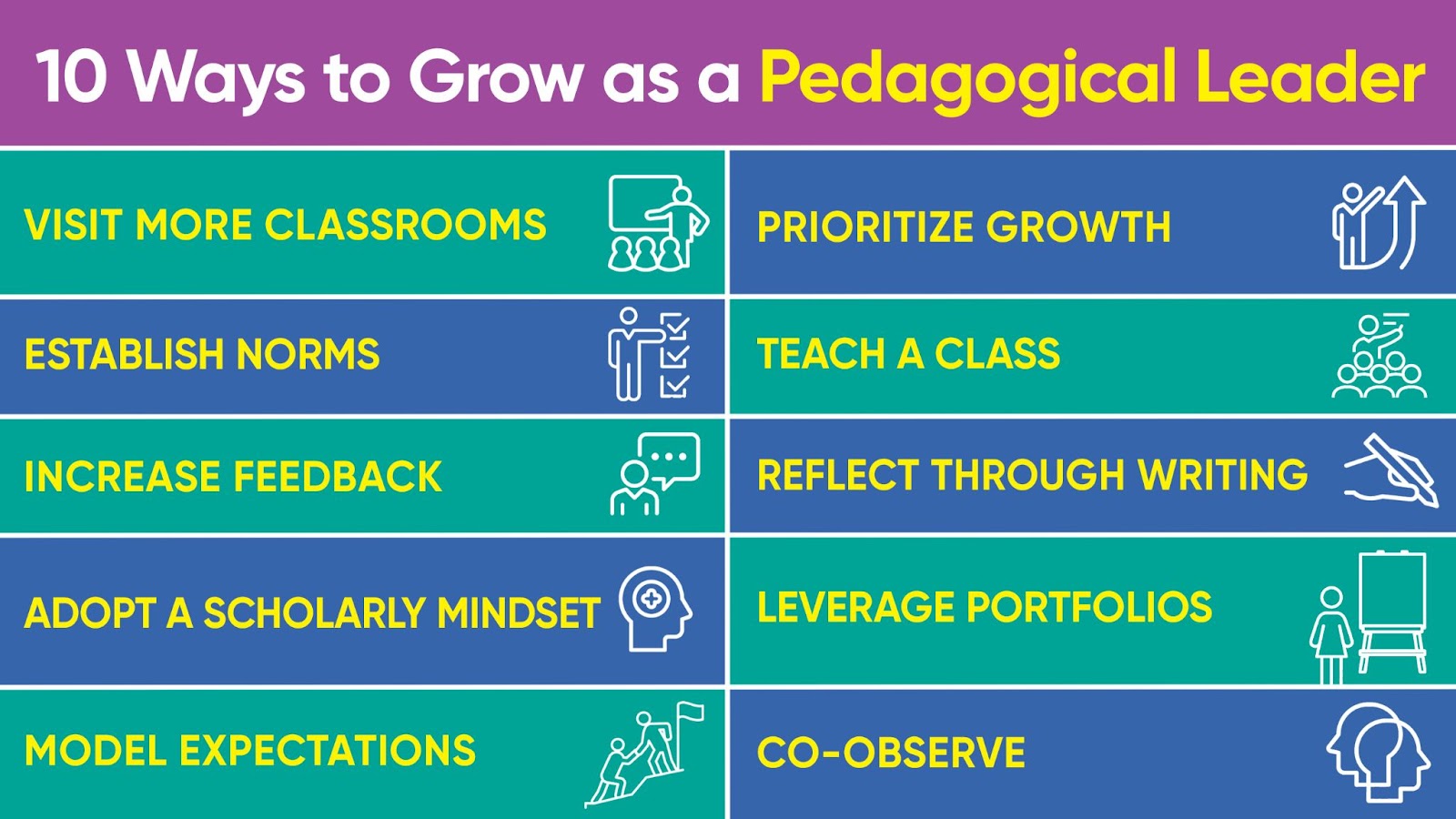The article emphasizes the importance of prioritizing pedagogical leadership over administrative tasks in the role of school administrators. Read these strategies for enhancing teaching and learning including increasing classroom visits, providing actionable feedback, modeling expectations, fostering professional growth through collaboration and reflection, and more.
I hold vivid memories of my early days as an assistant principal and principal, during which overseeing instruction was merely one among many duties that accompanied the role. Managing budgets, crafting memos, participating in meetings, responding to emails and phone calls, and handling various other tasks also claimed a significant portion of my time. The emergence of social media added yet another responsibility to my already full schedule: digital leadership. As a school administrator, proficiency in numerous areas is crucial, yet it remains paramount to prioritize the most essential aspect of the role—pedagogical leadership.
Despite my earnest efforts, my ability to visit classrooms regularly fell short of my desires. Moreover, the feedback I provided in written reports could have contributed more substantially to the improvement of teaching and learning, both within and beyond the classroom. If our ultimate objective is to enhance, we must prioritize the elements of our job that most profoundly influence student learning. Pedagogical leaders acknowledge that management is an integral part of the job, but it should never overshadow the cultivation of a positive learning culture aimed at boosting academic achievement.
Offering advice on improvement or any other matter is straightforward, but implementing it consistently poses an ongoing challenge. To aid you in initiating change, I've compiled ten specific strategies that I applied during my tenure as a high school principal, and now, I assist other leaders in employing them during coaching cycles. Here they are:
- Visit more classrooms: Begin by increasing the number of formal observations conducted each year, adhering to a schedule ensuring all teachers are observed numerous times annually. Develop an informal walk-through schedule with your leadership team, mandating at least five walks per day for each member.
- Establish norms: Establish a shared vision and expectations for all teachers. Abolish the routine of announced observations, have teachers provide evidence artifacts, and prioritize collecting assessments over lesson plans.
- Increase feedback: Always provide at least one practical suggestion for improvement during lesson observations. Curate data weekly for presentation at staff meetings. Clear, straightforward, actionable, and timely feedback is crucial for growth.
- Adopt a scholarly mindset: Improve professional practice and credibility by aligning critical feedback with current research. Keep a document of effective pedagogical techniques from readings. Embrace curiosity and ask questions, recognizing their importance in leading pedagogical change.
- Model expectations: Lead by example, especially in technology integration and practice improvement. Provide or co-create examples when teachers struggle with assessments. Developing and implementing professional learning sets a positive example.
- Prioritize growth: Attend conferences or workshops aligning with school or district initiatives, read education and leadership books, and create a Personal Learning Network (PLN) for continuous access to ideas, strategies, and support.
- Teach a class: Regularly teach or co-teach with struggling and exceptional teachers. It provides a better understanding of changing teacher roles in the digital age, strengthens relationships with staff, and enhances learning.
- Reflect through writing: As a connected educator, writing aids in processing thoughts and critical reflection. Encourage teachers to write brief reflections before post-conferences for a more collaborative conversation on improvement.
- Leverage portfolios: Incorporate portfolios into the observation process to provide detailed insights into pedagogical practices over the school year. Portfolios can showcase personalized learning activities, assessments, unit plans, and student work.
- Co-observe: Collaborate with administrative team members to co-observe lessons, benefitting from diverse perspectives and expertise. In coaching roles, encourage leaders to visit classrooms beyond their grade levels, fostering collective insight and effective feedback.
Ultimately, ensuring quality learning in our classrooms is of utmost importance. These ten strategies can be immediately implemented to enhance pedagogical leadership, with the potential for additional effective strategies discovered through further exploration. The image below provides additional insight.

About the Author:
Eric works with schools worldwide, helping educators meet and exceed their potential to improve learner outcomes. He is the founder and CEO of Aspire Change EDU, a collaborative consultancy designed to provide personalized support to all educational systems. Before this, he was a teacher and the award-winning Principal at New Milford High School. Under his leadership, his school became a globally recognized model for innovative practices. Eric oversaw the successful implementation of several sustainable change initiatives that radically transformed the learning culture at his school while increasing achievement. His work focuses on innovative and practical ways educators can transform teaching, learning, and leadership. Through his work with thousands of schools, Eric has emerged as an innovative leader, best-selling author, and sought-after speaker. His main focus is using research and evidence-based practices to empower learners and educators.